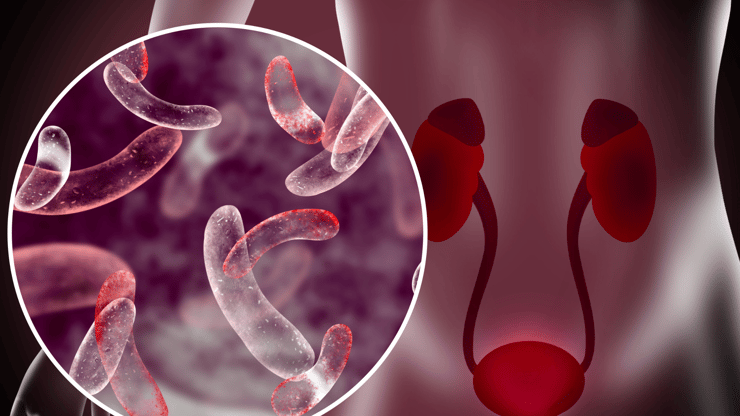Urinary Tract Infection NCLEX Review for Nursing Students

Urinary Tract Infections (UTI’s) are among the most common bacterial infections
Urinary Tract Infections (UTIs) are among the most common bacterial infections affecting individuals of all ages, making them a crucial area of knowledge for nursing students.
Something I have personally experienced, plus treated many patients in the hospital with. As front-line healthcare workers, nurses play a critical role in identifying and managing UTIs, promoting patient comfort, preventing complications, and enhancing overall patient well-being.
“What if I fail?”
You don’t need more questions. You need a real plan.
🎯 SIMCLEX + Flash Notes + ReadyScore = NCLEX Survival Package
Know you’re ready — before test day.
Urinary tract infections (UTIs) are prevalent and often uncomfortable bacterial infections that impact the urinary system. These infections can target various parts of the urinary tract, including the bladder, urethra, and kidneys.
UTIs are characterized by symptoms such as a persistent urge to urinate, pain or burning sensation during urination, cloudy or bloody urine, and discomfort in the lower abdomen. While UTIs are generally not severe, they can become problematic if left untreated, potentially leading to more severe kidney infections.
Timely diagnosis and appropriate treatment with antibiotics are crucial to alleviate symptoms and prevent complications. Maintaining good hygiene practices and staying hydrated can also play a role in reducing the risk of UTIs. Overall, understanding the symptoms and seeking medical attention promptly can contribute to a swift recovery and continued well-being.
Overview of Urinary Tract Infection
1. Infection anywhere within the urinary tract (Kidneys → Ureters → Bladder → Urethra) leading to inflammation
2. Pathogens gain entrance via perineal area or via the bloodstream
a. Indwelling catheters – Catheter-Associated UTI (CAUTI)
b. Older males are more prone due to urinary stasis caused by an enlarged prostate
Nursing Assessment for Urinary Tract Infections
1. Urine will be cloudy, strong odor (pyuria), burning with urination, and urinary frequency and will increase
2. Confusion (altered mental status) and lethargy, especially in the elderly
3. ↑ Temp, ↑ WBCs
4. Urine cultures reveal bacteria
Therapeutic Management for Urinary Tract Infections
1. Urine and Blood cultures BEFORE antimicrobials
2. Antimicrobials
3. Antispasmodic for bladder pain→ Oxybutynin
4. Analgesics→ Pyridium specifically provides relief of pain and burning with urination
Nursing Case Study for Urinary Tract Infections
Patient Profile:
Name: Ms. Ally JohnsonAge: 30 years old
Gender: Female
Medical History: None reported
Presenting Symptoms:
- Frequent, painful urination
- Urgency to urinate
- Lower abdominal pain and discomfort
- Cloudy and foul-smelling urine
- Physical Examination: Ms. Johnson displayed tenderness in the lower abdomen
- Urinalysis: Revealed the presence of leukocytes and nitrates, indicating a urinary tract infection (UTI).
Medical History:
Ms. Johnson had no significant medical history, but her symptoms pointed towards a UTI
Diagnosis:
Ms. Johnson was diagnosed with a lower urinary tract injection
Treatment Plan:
Initiated antibiotic treatment based on urine culture and sensitivity results
Fluid Intake:
Encouraged increased fluid intake to flush out bacteria from the urinary system
Symptom Management:
Administered analgesics to alleviate pain and discomfort
Patient Education:
Educated Ms. Johnson about UTI prevention, hygiene practices, and the importance of completing the full course of antibiotics.
Outcome:
With prompt medical intervention and nursing care, Ms. Johnson’s symptoms improved rapidly. Her urinary frequency and urgency decreased, and she reported less discomfort during urination. She completed the full course of antibiotics as prescribed and remained attentive to preventive measures.
“What if I fail?”
You don’t need more questions. You need a real plan.
🎯 SIMCLEX + Flash Notes + ReadyScore = NCLEX Survival Package
Know you’re ready — before test day.
You CAN Do This
Happy Nursing!








